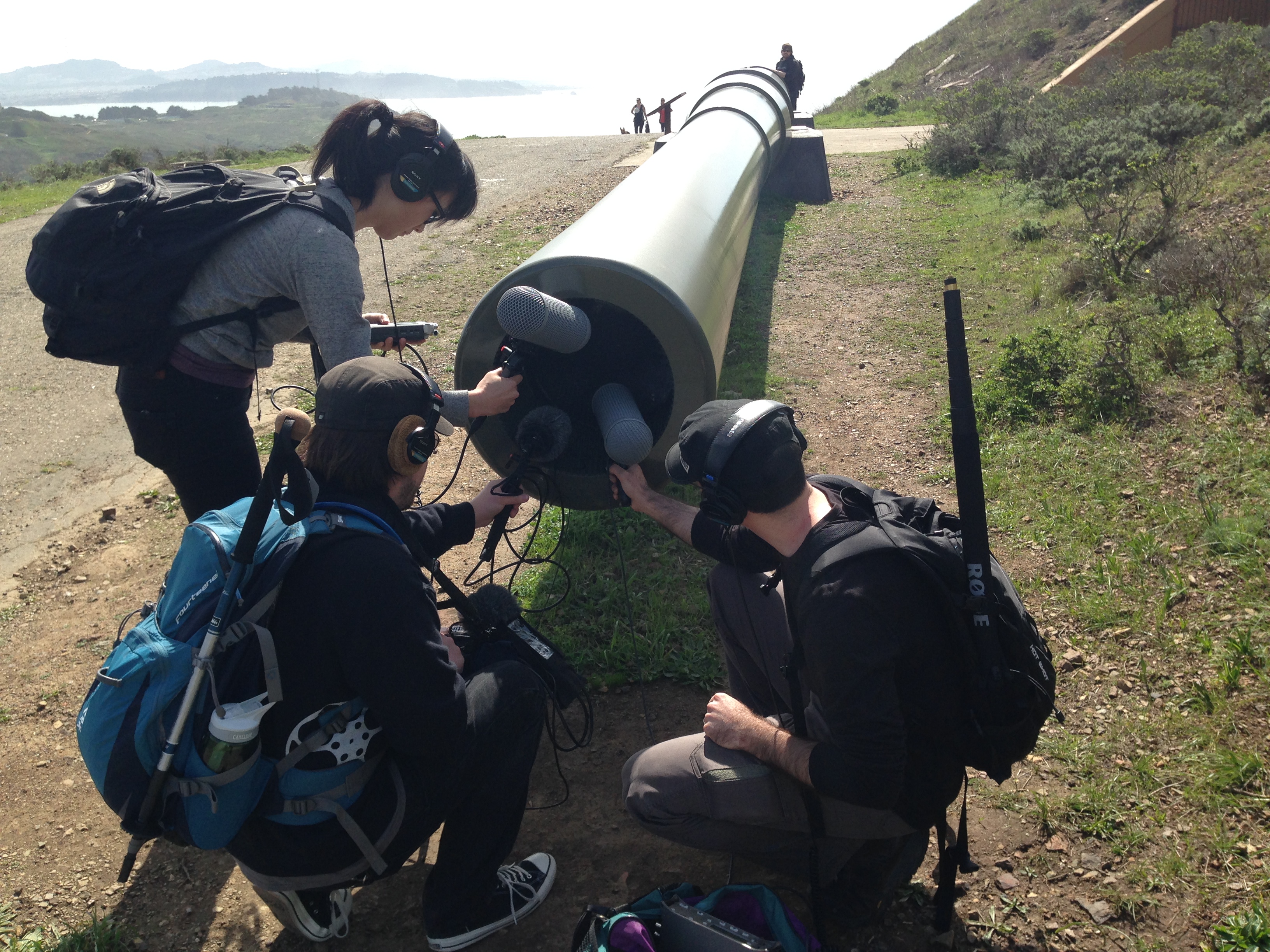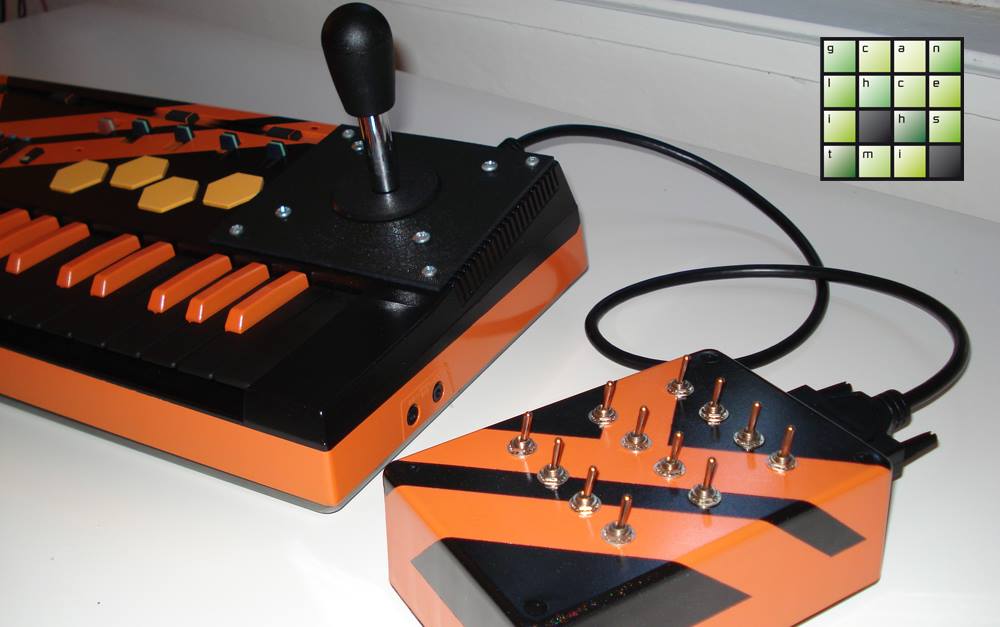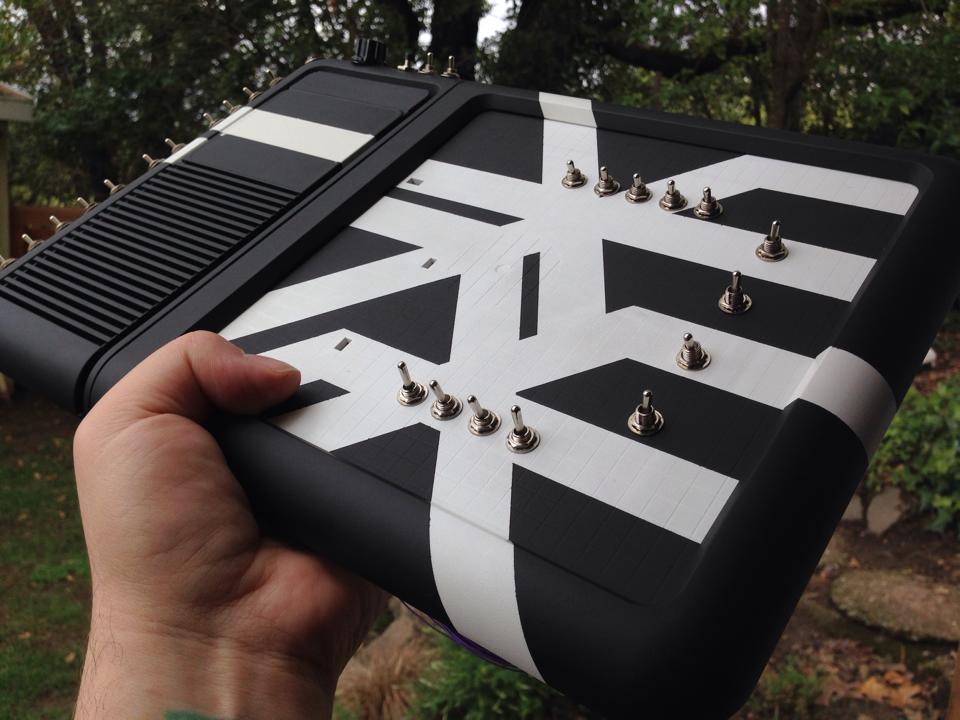Guest Contribution by Ivo Ivanov
Take a moment to think about the magnitude of all the rejected material that disappears during your editing process. Material with unwanted artifacts, discarded without much further thought, as it is rendered useless due to a number of auditory issues or location-specific problems. Now imagine if those discarded bits of audio were actually what you were truly looking for. Welcome to my world: I search for the sounds in between sounds.
While on a recent field recording trip with a few local colleagues, the day’s conversations and varying points of interest illuminated intriguing differences in our technical goals. While we all had essentially the same equipment (the usual field recorders, mics and accessories) and we were recording many of the same subjects, our focus and subsequent approach turned out to be significantly different. This raised some interesting discussions about perspective and context, which got me thinking about how much time I actually spend trying to deconstruct things and harness the “broken”.
 While the other sound designers in the group were recording with film in mind (i.e. capturing what I like to think of as “photorealistic” sound), I was recording with obscure sound effects in mind. That is to say, I was aiming for the same core sonic elements, but with the hope that I would capture unexpected artifacts which I would later harvest and mutate into something unusual. Almost everything I recorded that day would be deemed useless by my colleagues; a notion that inspired me to give this subject and my process further thought.
While the other sound designers in the group were recording with film in mind (i.e. capturing what I like to think of as “photorealistic” sound), I was recording with obscure sound effects in mind. That is to say, I was aiming for the same core sonic elements, but with the hope that I would capture unexpected artifacts which I would later harvest and mutate into something unusual. Almost everything I recorded that day would be deemed useless by my colleagues; a notion that inspired me to give this subject and my process further thought.
On a typical field recording day, I will have a location picked out along with a list of potential subjects at said location. Once there, I set out to move through the list, meanwhile keeping both eyes and ears open for anything obscure that was either unplanned or would make the planned subjects stand out in a distinctive way.
Some months ago, I worked on several sample packs (Chimera, Vulcan, Shadows) which made heavy use of this technique of harvesting peculiar anomalies to later use as focal points in more complex composite sound effects. While there are certainly “photorealistic” sounds in the layers of the final sfx, much of what makes the sounds so unique is the fact that I managed to infuse spontaneous audio elements to give them an extra point of interest and elevate them into “weird” territory. I find that this is much more challenging to accomplish with planned material.
An example of this was a singer who we discovered one morning in the large gun battery at Battery Townsley in Marin, California. We routinely organize sessions at this location, but that morning we approached the tunnel at the battery with slow, cautious steps as we heard this haunting and ethereal voice emitting from the tunnel with a ghostly cadence that ultimately had us frozen in place with our recorders running.
The lady (a hiker who had stopped to enjoy the natural acoustics of the tunnel) was very kind once we eventually approached her, and she was delighted to have had our audience. Her voice later made its way into some of the sound effects I designed for the horror sfx pack, Chimera. Had it not been for dozens upon dozens of such happy coincidences, I’m confident that the sounds would not have been nearly as compelling.
It doesn’t only come down to mere coincidence however. That is to say, I’m not exclusively referring to running into unplanned subjects. Often, I unintentionally capture things as I’m recording and am not even aware of the presence of these fragments until much later. As mentioned earlier, these unwanted bits are usually considered garbage and thrown away. For me, however, these little bits of chatter and other unexpected sounds are precisely what I am looking for during the editing process.
Once I return to the studio from a field recording session, I transfer the recordings to the computer at which point several days pass before I sit down to start the editing process. For me, editing is extremely time consuming and labor intensive, particularly because I am listening to every nuance of the recordings on a nearly microscopic level, listening very closely for obscure chatter, oddities and any other potential “issues” that I can extract and place in a special folder I’ve designated for such material.
As you’ve noticed by now, I’m a big fan of spontaneity and I try to encourage it whenever it’s appropriate. In my opinion, when it comes to creativity, some of our best works happen when we are least focused on perfection and structure. As a musician, some of the most compelling riffs and melodies I’ve ever written happened completely off the cuff and in a very short burst of creativity. The same is absolutely true in my sound design work. It’s as if by thinking “I’m now going to sit at this desk and create something excellent”, we are automatically anchoring our inspiration in a way that prevents us from truly unobstructed creative expression.
With that in mind, I have been working on training myself to be less methodical in my creative process whenever possible. Sure, I will later go back to scrutinize every last nuance and detail of the results, but at the outset of doing anything creative I try to attach as little rationale as possible to the process. This truly works wonders for me as it allows me to concentrate on expression rather than quantifying things logically. In my experience, there is nothing more hindering to my creative process than logic, reason and the subsequently hardwired expectations and psychological limitations.
In taking a more macro look at my creative approach, I’ve come to the realization that all of this doesn’t end with my approach to capturing natural recordings. A huge part of my methodology as a sound designer is to “break” something in order to make it new. For example, the sounds of corrupt data and technical malfunctions represent such a vast sonic landscape that I find myself gravitating toward every possible resource I can use to deconstruct the sonic spectrum as a creative technique.
 A good example of this is circuit bending. For the unfamiliar, circuit bending basically consists of rewiring old toys and keyboards in such a way that it’s possible to short circuit them on command by means of a switch. These short circuits produce all manner of surprising sonic results, which can then be “learned” by the user who can ultimately “play” the device like an instrument.
A good example of this is circuit bending. For the unfamiliar, circuit bending basically consists of rewiring old toys and keyboards in such a way that it’s possible to short circuit them on command by means of a switch. These short circuits produce all manner of surprising sonic results, which can then be “learned” by the user who can ultimately “play” the device like an instrument.
Such forgotten electronic devices, discarded and superseded by modern technology, somehow become new again and yield sounds that integrate into the modern production landscape.
Not only does the novel process of taking something old and with no value and transforming it into something new and highly valuable yield an immeasurable amount of satisfaction, but the sheer unpredictability of a trip to the thrift store or pawn shop is often also nothing short of a blissful escapade.
 The entire experience is adventurous in nature, as you could wind up finding a gem or simply go from place to place and end up empty handed. With circuit bending, this experience is heightened by the fact that you still don’t know what your new toy will sound like until you take it home and begin to modify it. Thus, the level of uncertainty is prolonged, as you may bring the unit home only to find out that it is totally useless.
The entire experience is adventurous in nature, as you could wind up finding a gem or simply go from place to place and end up empty handed. With circuit bending, this experience is heightened by the fact that you still don’t know what your new toy will sound like until you take it home and begin to modify it. Thus, the level of uncertainty is prolonged, as you may bring the unit home only to find out that it is totally useless.
Critics argue that circuit bending is a needlessly complex, expensive, and time consuming alternative to the less labor intensive, common, and affordable software synthesis. I find that this claim is easily debatable, as it is clearly a matter of creative perspective and aesthetic values.
The irony of turning something like a discarded child’s toy, considered positive, predictable and safe into something devious, experimental and unpredictable is fundamentally unsurpassed as an example of harnessing the broken.
In summary the saying really stands true; “One man’s trash is another man’s treasure”.

Ivo,
Great read. Thank you for sharing your thoughts.
Love the closure :)) so true. one man’s trash take, another man’s keeper!
Best wishes,
Thom
Thanks for reading, Thom! I appreciate your comment :)
Great article! I’m a big fan Ivo, keep mangling :)
Thanks Bob – sincerely appreciated :)